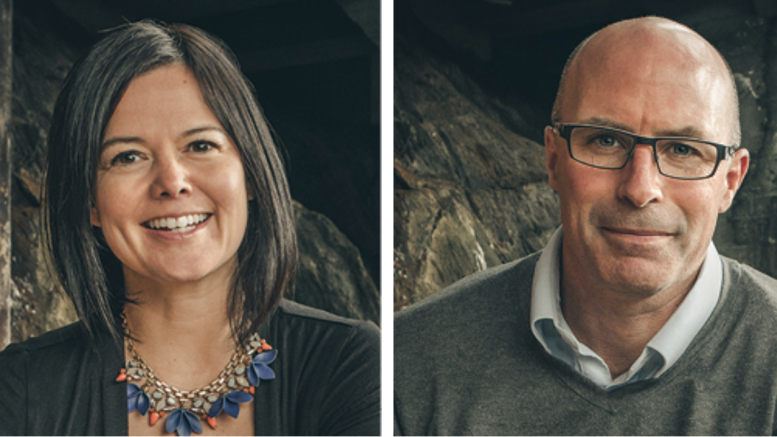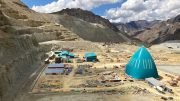Relationships between the mineral exploration and mining sector and Indigenous peoples within Canada and around the world vary across a broad spectrum — from respectful and mutually beneficial to antagonistic and harmful. We see these diverse variations play out on a global stage and how companies navigate this increasingly complex socio-political environment is a primary factor in whether a project advances. Leading companies have embraced this reality and recognize the importance of effectively engaging, building and sustaining meaningful relationships with Indigenous communities.
Getting it right is not easy though and, like the diversity of Indigenous history and cultures around the world, there is no one right way to pursue this goal. There are, however, some key ideas and examples of how to create conditions for positive relationships to be built with the foundation being respect, knowledge, understanding and the recognition of Indigenous rights.
What is meant by economic reconciliation?
In its 2015 final report, the Canadian Truth and Reconciliation Commission (TRC) defined reconciliation as “establishing and maintaining a mutually respectful relationship between Aboriginal and non-Aboriginal peoples in this country. For that to happen, there has to be awareness of the past, acknowledgement of the harm that has been inflicted, atonement for the causes, and action to change behaviour.”
There has been harm inflicted on Indigenous Peoples worldwide through the unchecked exploitation of natural resources — without, in far too many cases, material benefits returning to them. These same communities have also had to, in some cases, endure legacies of environmental degradation and negative social impacts that continue to this day. This is not to say this has always been the case. But there are far too many examples where this is the reality.
As noted by the TRC economic reconciliation is about acknowledging this harmful past, showing that responsibility is taken, apologizing as needed and paying reparations where necessary. And, from there, taking concrete steps to change the behaviour and actions of those involved in industry today. These steps include addressing critical issues such as the recognition of pre-existing Indigenous rights, adhering to the principles of free, prior and informed consent, supporting a collaborative approach to decision-making, looking for ways to more equitably share in benefits and, ensuring sound environmental stewardship in all projects that are advanced.
Where does mineral exploration fit in this discussion?
The prospectors, geologists and geoscientists that form the foundation of the mineral exploration industry both within Canada and globally are almost always the first to “make contact” with local communities. Following on the scientific evaluation of mineral potential or an awareness of historical geological discovery, it is most often the people involved in the search for and discovery of minerals that begin the conversation with those whose lands on which they wish to explore. And, as the old saying goes, you never get another chance to make a first impression!
This is long before there is any confidence that there is the potential for an actual mine. And as those of us familiar with the elusiveness of exploration success, most exploration projects never advance beyond their early stages.
However, often communities not aware of the nature of the business or whose only real knowledge of mineral exploration and mining comes from stories or examples they have seen or heard about do not distinguish between what is early stage and what might come. The footprint of mineral exploration is typically small and reversible. There are plenty of great guides and direction (for example “E3 — Plus” by the PDAC) for how the exploration industry can manage their activities in the least impactful manner. But, for Indigenous communities this seemingly small and low impact project can be viewed as a first step towards future exploitation and development that may or may not be welcomed. This can create real tension within a community that may fear the introduction of industry into their homelands and force discussions about future potential development long before what shape that might take is known.
What is a mineral exploration company and team to do?
Taking the idea of first contact, when engaging with an Indigenous community or communities, there are some meaningful things that an exploration team can do to set the company up for possible success. And, we say possible because it must be recognized, with UNDRIP and free, prior and informed consent being the obligation that a responsible company must now adhere to, that a hard reality for industry is — they may not be welcomed. And, if that is the case, for whatever reason, that view must be understood and respected.
In the case that the Indigenous community is open to exploration activities to occur within their traditional territories then the question turns to: what steps can be taken to provide the best opportunity for a positive outcome? We do not have enough space in this column to fully explore these ideas, but some key steps companies can take in this journey include the following:
- Self-Reflection — prior to beginning a dialogue with Indigenous communities, take the time to consider the beliefs, biases and experience of your own team and management. This is a critical step that is often overlooked.
- Education and Learning — prior to making formal contact, take the time to learn about local Indigenous cultures and beliefs, the history of industry working in the area in which you want to explore, and know the important cultural, governance and community practices in place.
- Land and water — in your quest for understanding, seek out knowledge on unique Indigenous perspectives regarding environmental stewardship, Indigenous knowledge, cultural connection, and time.
- Effective engagement — take the time to learn how to engage in a harm-free way, on a community-by-community basis. There are some amazing people out there that can help you. Seek them out, get good guidance and prepare yourself properly.
- Entering into agreements — We almost always recommend, if the community is willing, to enter into an agreement right at the beginning. A memorandum of understanding (MOU) or exploration agreement are great ways to start a positive relationship and provide confidence to both sides on what is expected of one another. Consider working with the community to have them become equity holders in your company.
- Create a Reconciliation Action Plan — reconciliation is a journey, not a destination. And to be successful you and your company must constantly work on supporting a meaningful, respectful and productive relationship. An Action Plan that is endorsed by the board and senior management and implemented throughout the project team can be a great way in which to ensure that journey is successful over the long term.
What does ‘getting it right’ look like?
There are many in industry who are advancing reconciliation today both within their own companies and industry wide and there are many Indigenous leaders who are charting a good path for their communities. Some recent examples include the Nisga’a Nation and Ascot Resources (TSX: AOT; US-OTC: AOTVF) working together in the development of the Premier Gold and Red Mountain projects in northwestern British Columbia; Osisko Development (TSXV: ODV; NYSE: ODV) working closely with the Lhtako Dene Nation, Williams Lake and the Xatśūll First Nations in the development of the Cariboo gold project in central B.C.; and Alamos Gold (TSX: AGI; NYSE: AGI), working with the Matachewan and Temagami First Nations at the Young-Davidson Mine in northern Ontario. These companies and communities are demonstrating how respectful and beneficial relationships can work. And there are many others.
There is no one answer for defining what it takes to “get it right” when it comes to economic reconciliation though. As there are more than 600 recognized First Nations, Inuit and Metis communities across Canada and thousands around the world, “right” is a relative term that can only be defined by the community in which a project or relationship is being built. However, what is clear from recent examples of industry and Indigenous communities working together is that by starting relationships with respect and the recognition of rights, taking the time to understand different histories, perspectives, and beliefs, being adaptable and open to new ways of doing business, doors to shared opportunity are being opened for all involved.
— Michael McPhie, M.Sc., QEP, serves as co-chair and founding partner of Falkirk Environmental, is the former president and CEO of the Mining Association of British Columbia and is an officer and director of several publicly traded and private resource companies.
— Christy Smith, B.NS., MBA, is a member of the K’ómok’s First Nation on Vancouver Island and is a partner and vice-president of indigenous and stakeholder engagement at Falkirk Environmental and vice-president of sustainability at TDG Gold.
Together they are the authors of Weaving Two Worlds – Economic Reconciliation Between Indigenous Peoples and the Resource Sector (www.weavingtwoworlds.com).






Be the first to comment on "A way forward for mineral explorers and Indigenous Peoples"